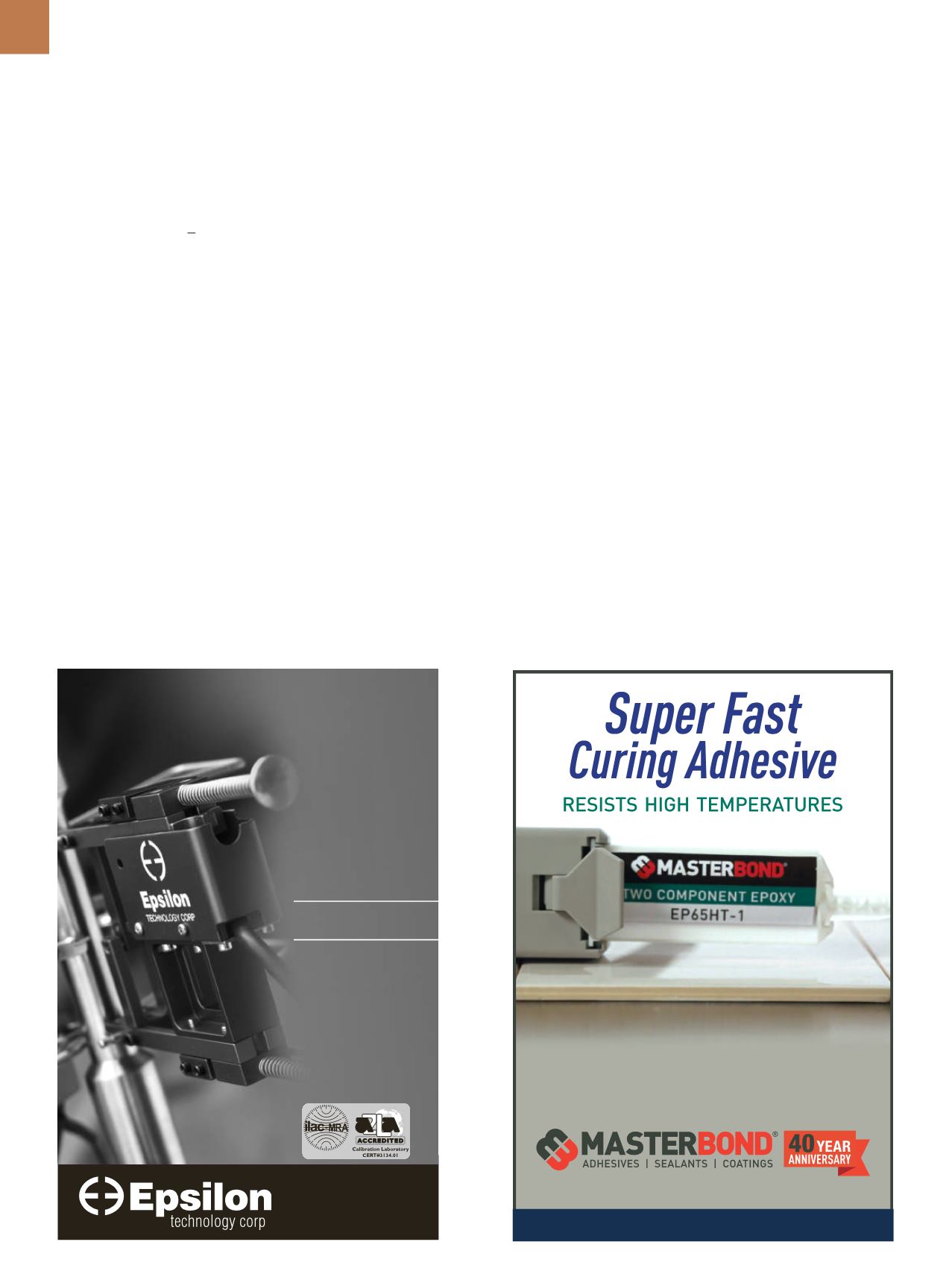

A D V A N C E D M A T E R I A L S & P R O C E S S E S | A P R I L 2 0 1 6
2 4
CONCLUSIONS
The loading direction for
α
+
β
tita-
nium alloy wire affects the activation
of prism slip bands, presumably due to
the titanium wire having preferred crys-
tallographic texture. Similarly, solution
quenched and aged microstructures are
more resistant to {1011} slip band forma-
tion. The interplay of these mechanisms
is likely important in dictating inherent
material strength, and therefore, in the
material selection and optimization pro-
cess for a given application.
These high speed, high fidelity
techniques for analyzing texture and
dislocation content enable greater un-
derstanding of the influence of texture
on deformation of complex titanium
engineering alloys than previously
possible. This information can be used
to validate meso-scale microstructure
modeling such as crystal plasticity and
finite element models that track aniso-
tropic grain behavior. Thesemodels can
work in conjunction with other models
to predict macroscopic physical prop-
erties such as strength, fatigue life, and
creep behavior.
~AM&P
For more information:
J.W. Foltz is
principal research metallurgist, ATI
Specialty Alloys and Components,
1600 Old Salem Rd., Albany, OR 97321,
541.926.4211,
john.foltz@atimetals.com,
www.atimetals.com.
References
1. R.J. Kamaladasa and Y.N. Picard,
Basic Principles and Application of
Electron Channeling in a Scanning
Electron Microscope for Dislocation
Analysis,
Microscopy: Science, Technolo-
gy, Applications and Education
, (Eds. A.
Mendez-Vilas and J. Diaz), Formatex,
p 1583-1590, 2010.
2. T.R. Bieler, et al., Grain Boundaries
and Interfaces in Slip Transfer, Current
Opinion in Solid State and Materials
Science, (18), p 212-226, 2014.
3. A.J. Wilkinson and D. Randman,
Determination of Elastic Strain Fields
and Geometrically Necessary Dislo-
cation Distributions Near Nanoin-
dents Using Electron Back Scatter
Diffraction,
Philosophical Magazine,
90(9), p 1159-1177, 2010,
http://doi. org/10.1080/14786430903304145.4. J.F. Nye,
Physical Properties of Crys-
tals: Their Representation by Tensors
and Matrices,
Oxford University Press,
1987.
5. J. Nye, Some Geometrical Relations
in Dislocated Crystals,
Acta Met.
,
1(2), p 153-162, 1953, http://doi.
org/10.1016/0001-6160(53)
90054-6.
6. W. Pantleon, Resolving the Geometri-
cally Necessary Dislocation Content by
Conventional Electron Backscattering
Diffraction,
Scripta Matl.
, 58(11),
p 994-997, 2008,
http://doi.org/ 10.1016/j.scriptamat.2008.01.0507. A.J. Wilkinson, et al., High-Resolution
Elastic Strain Measurement from Elec-
tron Backscatter Diffraction Patterns:
New Levels of Sensitivity,
Ultramicros-
copy,
106 (4-5), p 307-13, 2006,
http:// doi.org/10.1016/j.ultramic.2005.10.0018. A.J. Wilkinson, et al., High-Resolu-
tion Electron Backscatter Diffraction:
An Emerging Tool for Studying Local
Deformation,
J. Strain Anal. for Eng.
Design,
45 (5), p 365-376, 2010.
ATI 6-4 and ATI 3-2.5 alloys are
trademarks, and ATI 425 alloy is a
registered trademark of ATI Properties
Inc., Pittsburgh.
Extensometers Strain measurement for materials testing Compatible with all major test systems • Measuring ranges from 1% to 2000% strain • Gauge lengths from 0.125 to 10+ inches (3 to 250+ mm) • Temperature ranges from -265 to 1600°C • Laser extensometers 3975 South Highway 89 Jackson, WY 83001 USA 307 733-8360 www.epsilontech.com Over 30 models to cover all common tests ISO 170252013.15 AMP Dir b&w ad_2002.02 ad 1/2/14 10
:41 AM Page 1 154 Hobart St., Hackensack NJ 07601 +1.201.343.8983 ● main masterbond.com • High bond strength • Meets NASA low outgassing specifications • Glass transition temperature T g >125°C www.masterbond.com

















